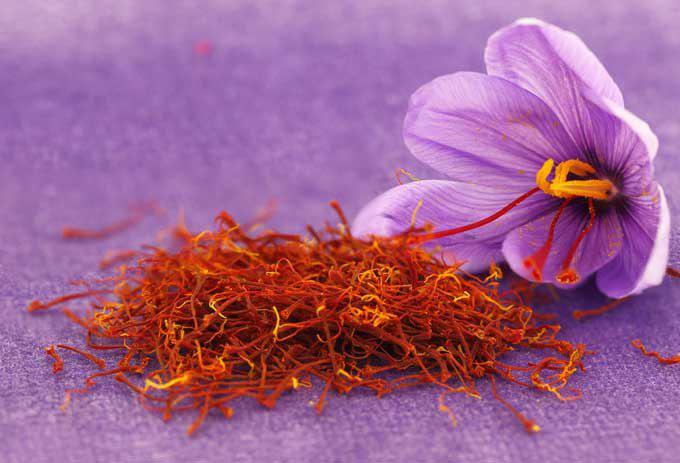Countries such as Iran, Afghanistan, China, India, Spain, Italy and Greece are among major producers of this plant. However, the cradle of this plant is Iran where more than 85% of the world’s saffron is currently produced and exported to 46 countries. The turnover from saffron trade in the world hovers around $8 billion, which shows the high value of this plant. Part of the product is packed as saffron, and part of it is offered on the market in the form of essence, tea or saffron supplements.
Applications of saffron
The part of saffron which is used is its stigma. In each flower, only three stigmas are usable and can be picked. So, around 200,000 saffron flowers are needed to produce one kilogramme of saffron. This is one of the reasons behind the high price of this product. Saffron is made up of around 150 compounds. However, three are the main ones that produce the special qualities of this plant. Picrocrocin gives saffron its flavour, safranal gives the plant its aroma and crocin gives the plant its colour. Also, antioxidants and carotenoids increase the quality and properties of saffron. This plant is used in the following industries:
- Hygienic products
- Foodstuff and drinks
- Natural dyes
- Pharmaceutical industry
The following are some of the properties of saffron:
Antidepressant
Two key compounds in Saffron, namely crocin and safranal have antidepressant properties. Surveys show Saffron is as effective in tackling stress and depression as the chemical drug Fluoxetine. The saffron oral drop made with the essence of the plant is useful in reducing depression and stress.
The saffron pill or granule is among the medicines produced in the world to prevent cancer.
Prevention and Treatment of Alzheimer’s
The crocin in saffron is effective in preventing the deaths of brain cells. Saffron also raises serotonin levels in the brain. This substance prevents the Alzheimer’s disease. Clinical studies show the saffron capsule is as effective as chemical drugs memantine and donepezil in tackling Alzheimer’s without having the side effects of chemical substances.


